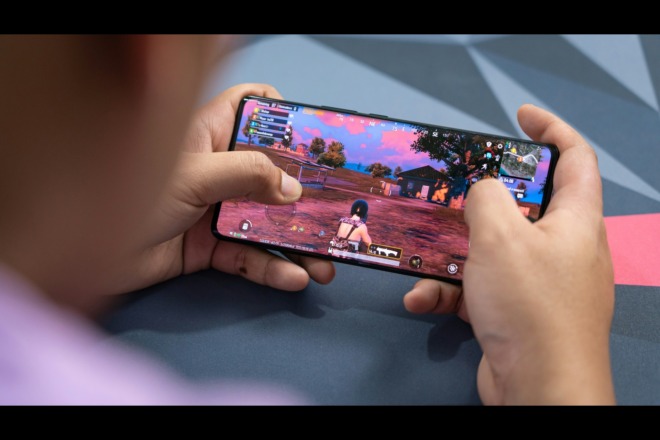If you’re already in creative work or simply love making something from nothing, you might be wondering how to become a UX designer. UX designers typically make good money and are becoming more in demand than ever before. However, gaining the skills needed to work in UX takes time, commitment and a bit of know-how. Two decades ago, designers were still figuring out the best ways of integrating digital design into their everyday work.
Today, nearly all work is done digitally, and marketing has moved to an online platform in many cases. This changes the way designers work and forces them to think through the user experience (UX) more than in the past. The average salary for UX designers is around $88,280 per year.
If you’re thinking about specializing in UX, there is strong demand in most sectors for this specialization in design, with about 87 percent of managers reporting they plan to hire more UX professionals in the next few years.
What Type of Training Do You Need?
If a new career in UX design sounds fascinating, you might wonder exactly how to become a UX designer. Do you have to go to college? What classes do you need? What skills do employers look for? While you don’t have to go to college to become a UX designer, a degree in design is a good start in getting the skills you need. However, you can also gain those skills through online courses or by taking a few classes at a local community college. Just keep in mind that as you move up in your career, you may want the degree to go into management at some point.
Skills You Need
As a UX designer, your job is making the user experience better through product, service or delivery. There are some specific skills you need to do your job effectively:
- Ability to sift through data and analyze the results
- Understanding of prototyping software and its importance
- Knowledge of split testing and platforms for getting user feedback
- Basic design knowledge about what users expect
Many of the skills graphic and web designers need are the same ones used in UX design. However, UX designers must ramp things up a bit and always consider the end user and the overall experience. How will a specific color palette affect the emotions of site visitors? Is the product package easy to open?
Colleges Specializing in UX
If you want to add on to your education and specialize in UX, a few colleges are offering interesting programs.
- Stanford offers a graduate design program that looks at human behavior and teaches designers to examine big issues.
- The University of Southern California offers a graduate-level course in UX design and strategy taught by expert Jaime Levy.
- The University of Washington offers a master’s degree in human-computer interaction and design.
Those are a few of the better-known programs for picking up UX-specific skills. However, keep in mind that you can take courses through your local community college. Think about offerings such as human behavior, statistics, IT knowledge and design. By combining several classes, you could even complete a general studies degree with a specialization in human behavior and design topics. Are you wondering how to become a UX designer without spending a fortune on a master’s degree? There are online courses and do-it-yourself options, too.
Online Courses
If you’re more of a do-it-yourselfer, you may want to go the online route and learn the UX skills needed. Keep in mind that you may need to really ramp up your portfolio if you don’t have a related degree. However, it can still be done. Here are a few options for how to become a UX designer through online courses:
- Interaction Design Foundation: Join this organization for around $13 per month and gain access to its vast library of courses in interactive design.
- Udemy: If you just want to brush up your skills in UX, Udemy offers several courses for reasonable rates.
- Springboard: For about $72 per month, you can take Springboard’s courses in UX design and begin building an online portfolio.
- Career Foundry: Take a full UX design course through Career Foundry and finish with a certification in UX design. It also offers a UI program, if you’d later like to add that to your skills. It’s pricey at about $6,500, but it is a full, fast-paced class that will offer all the skills you need.
If you’re on a tight budget, you could also look at the required courses for a degree and then find free online equivalents to go through on your own. Read some of the best UX design blogs to round out your skills. It might be a bit harder to master how to become a UX designer by reading on your own, but it isn’t impossible.
Gaining Experience in UX Design
How to become a UX designer includes the necessity for gaining experience. First, find a local charity or cause you believe in. Help it out pro bono to flesh out your portfolio and gain valuable experience. While you’ll work for free, you’ll give back to something you already believe in, and the samples will help you when you go on interviews.
When thinking about how to become a UX designer, you may also want to look at taking on some lower-paying jobs at first. If the pay is less, people are more likely to take on a beginner UX designer. You’ll still make a little money, but you’ll also gain experience and more samples to show higher-paying clients or potential employers. Find a mentor and study under them — ideally, you’d find a mentor who is already employed at a company where you’d like to work. However, you might also gain a cheerleader through a course you take or networking opportunities.
Someone who is experienced in UX design can guide you and help you avoid the pitfalls all newbies run into.
Landing Your First Job
How to become a UX designer includes actually landing that first job. Getting someone to take a chance on you isn’t always easy. Sure, you can build up your portfolio by taking one-time gigs on Fiverr and Elance, but what about getting a full-time job with benefits, paid time off and a 401(k)?First, practice your interview skills. Make sure your portfolio is fleshed out, even with pro bono projects, so you can show potential employers what you’re capable of. Go for entry-level positions at first. You aren’t going to land a job where you’re competing against people with 10 years of experience. There are some areas of the country where UX designers are in high demand. How to become a UX designer? Go where you’re needed.
Best Cities for UX Designers
There are some cities where UX designers are in high demand, the pay is excellent and opportunities are vast. Although cities such as Hong Kong are excellent choices, most people don’t want to relocate to another country. For this guide, we’ll stick with U.S. locations. However, if you are willing to expand to other geographic regions, your opportunities and potential pay also increase.
- San Francisco: Silicon Valley is at the cutting edge of digital technology, so it isn’t surprising that salaries for UX designers in this area average $107,529 per year. However, the cost of living in California is also much higher than in some other parts of the country. You’ll gain year-round milder temperatures, but you may also have to move far from family and friends.
- Seattle: This beautiful, if rainy, town is home to corporate giants such as Amazon and Microsoft. The average salary in Seattle for a UX designer is $106,776.
- Charlotte, NC: Charlotte makes the list of one of the towns creating the most tech jobs in recent years. UX designers make about $94,355 per year in Charlotte, and the cost of living is fairly low.
- Indianapolis: Smack in the heart of the Midwest, this thriving town also made the list of top five places for tech jobs. Salary for UX designers hits $94,632 in Naptown. Cost of living is lower than any of the other cities on this list, but Chicago is only a short four-hour drive and Cincinnati two hours.
- Dallas: Even though Dallas doesn’t always make the top five cities lists, it’s an interesting choice because of its location and other big cities in the state, such as Austin, where opportunities abound. The average UX designer in Dallas makes $98,077 per year. Cost of living is average.
Even though some cities pay better than others, the best city is the one where you want to live and feel most at home. You can do UX work from nearly anywhere, especially if you don’t mind freelancing.
Tips for New UX Designers
As a recap, be sure to take these steps to advance your career as a UX designer:
- Find a mentor. Someone with more experience than you can teach you a lot about how to become a UX designer.
- Take on every job at first. Taking on a wide variety of tasks allows you to see where you excel and where you need work.
- Network with other designers. Go to conferences, attend workshops and chat with others in your line of work.
- Read UX design blogs. They will help you stay up on the latest trends in the industry.
- Learn strong communication skills. You’ll need them to work with collaborators and clients.
UX design is a rewarding career. Be open to new experiences and pay attention to what those who know more have to say.
UX Design as a Career
UX design is a rewarding career that pays well. Take the time to learn the skills needed to rise above the competition. Over time, you’ll figure out if you want to work for a company or for yourself. As technology changes in the coming years, the role of UX design is likely to evolve as well. Stay open to new progress, take classes and keep learning. To be the best in your field, gain new skills every year.
CHAPTER 9: The Best UX Tools and Techniques CHAPTER 11: Top Mobile UX Design Principles to Remember
The UX Design Guide for All Levels: Introduction
Chapter 1: The Top Front End Technologies for UX Designers
Chapter 2: What is the Difference Between UX and UI?
Chapter 3: The Laws of UX
Chapter 4: Why Mobile UX Matters
Chapter 5: What Is the UX Process?
Chapter 6: Why User Experience Design Is Essential to Everything
Chapter 7: What Is Lean UX?
Chapter 8: The Top UX Design Principles
Chapter 9: The Best UX Tools and Techniques
Chapter 10: How to Become a UX Designer
Chapter 11: Top Mobile UX Design Principles to Remember
Chapter 12: Dark Patterns: The Trickery Behind These Poor UI Tactics
Chapter 13: What Does Good Customer Experience Look Like?
Chapter 14: The Different Types of User Interface
Chapter 15: The Top UX Design Courses
Chapter 16: Skills Needed to Become a Great UI Developer
About The Author
Eleanor Hecks is the Editor-in-Chief of Designerly Magazine, an online publication dedicated to providing in-depth content from the design and marketing industries. When she's not designing or writing code, you can find her exploring the outdoors with her husband and dog in their RV, burning calories at a local Zumba class, or curled up with a good book with her cats Gem and Cali.
You can find more of Eleanor's work at www.eleanorhecks.com.




